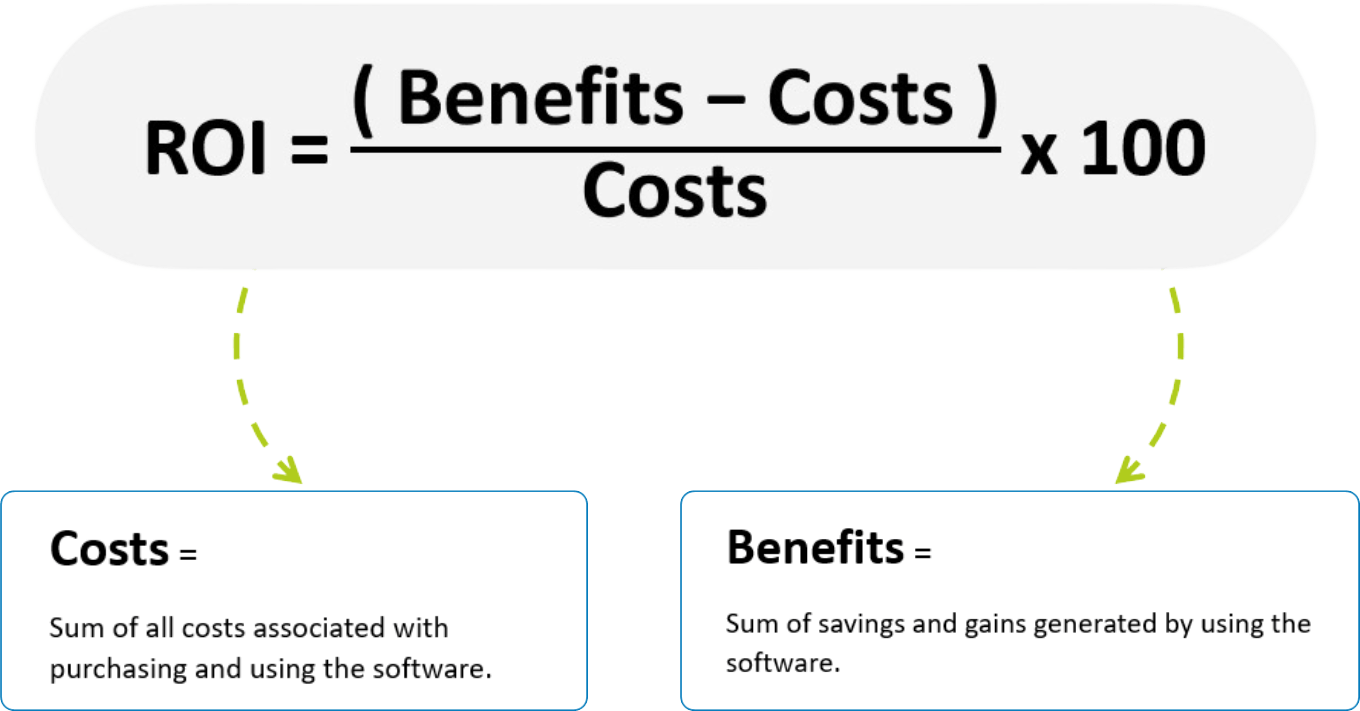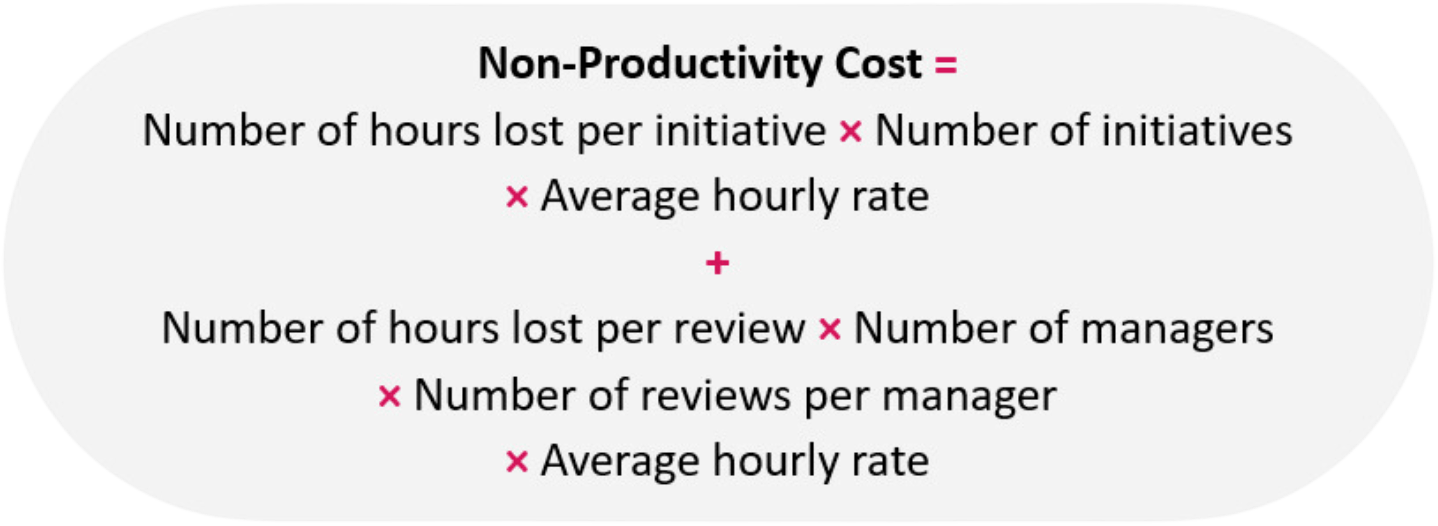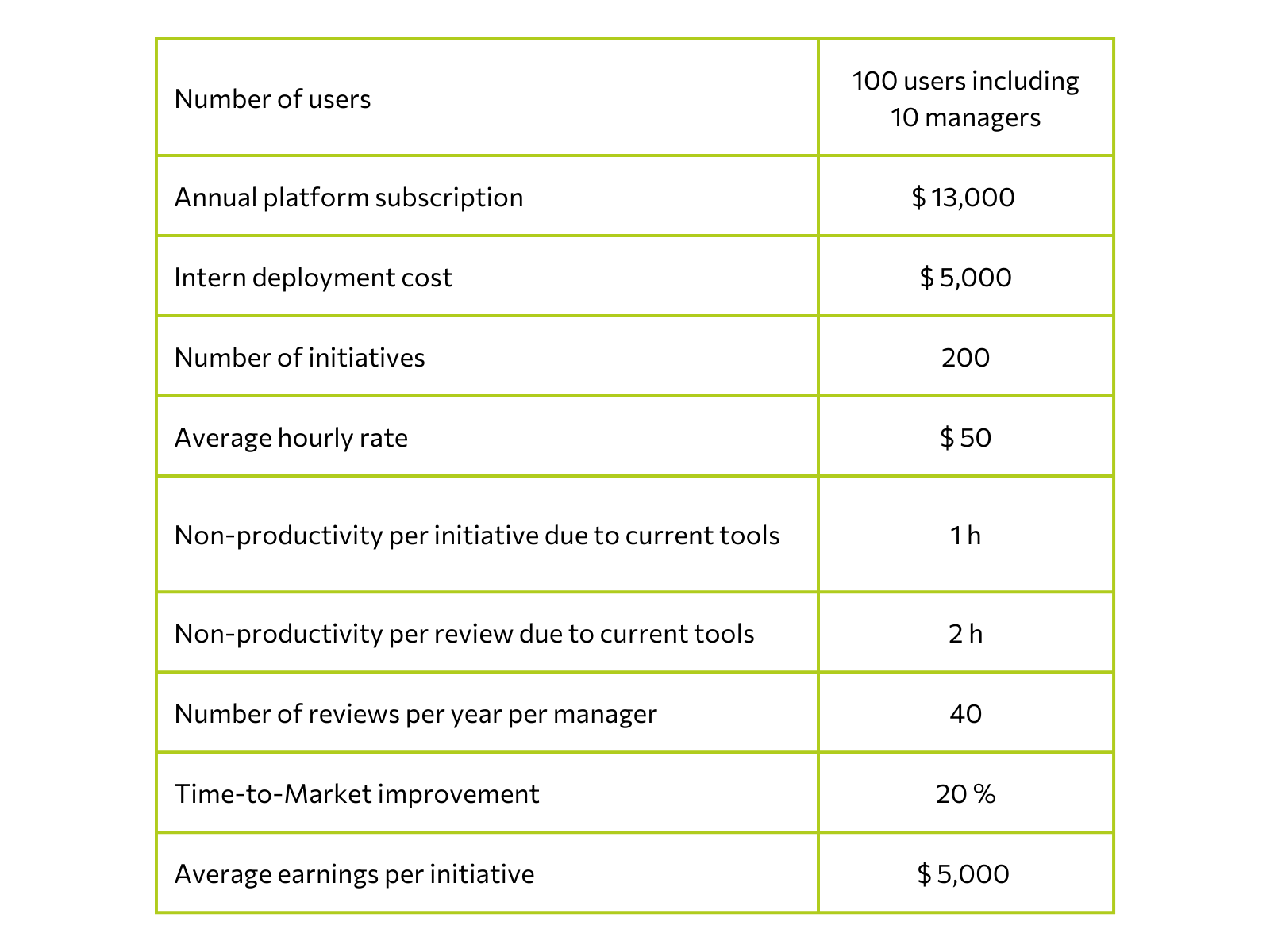IDhall is a ready-to-use application with immediate impact for the organization.
The platform stands out for its ease of use, flexibility and ability to adapt to the needs of each organization. Its intuitive interface enables rapid adoption by teams, while its advanced functionalities offer comprehensive management of initiatives.
Today, you can see that current tools are hampering your productivity and organizational efficiency. You’re convinced that IDhall can revolutionize both your organization’s ability to engage teams and its ability to execute.
You can’t wait to deploy the solution, but there’s still one important step to take: convincing the right people of the value of investing in IDhall.
In other words, how do you present a return on investment that will enable you to validate the budget?
The variables you must take into account when calculating return on investment
To calculate the return on investment of a piece of software, you must first calculate the sum of all costs associated with acquiring and using the software over a chosen period (usually 12 months). These usually include the platform subscription fee, maintenance and support costs, training costs, implementation and operating costs, as well as indirect costs (internal expenses within your organization for the project).
For IDhall, this calculation is simple. If you know the number of users, we can give you all these figures very quickly.
Next, you need to calculate the benefits of the software, and in particular the gains associated with reduced non-productivity and improved Time to Market.
We can calculate IDhall’s return on investment (ROI) using the following formula:

Gains in productivity
When using Excel, many irritants hamper the efficiency of users in processing initiatives and the productivity of managers in preparing and leading periodic reviews:
- Locating the file to be used and managing any version conflicts;
- Find the initiatives in the file and the relevant information;
- Find convoluted solutions to avoid losing track of history;
- Update data, taking care not to overwrite other data;
- Notify colleagues of any changes by other means (email, Teams);
- Consolidate data, ensuring its integrity;
- Find solutions to work around Excel’s reporting limitations;
- Correct errors.
Our customers report that the use of inappropriate tools to manage an initiative from start to finish results in non-productive time for all the people involved, which can add up to several hours, depending on the type of initiative.
The impact of inadequate tools is even more significant for people in charge of managing a portfolio of initiatives. The time spent per review, seeking for information, consolidating data, performing integrity checks and formatting information, amounts to hours lost per review and per manager.
Here’s how to calculate the cost of non-productivity within your organization, and therefore the productivity gains to be included in the ROI calculation:

At an average hourly rate of $50, the cost of unproductive tools can quickly become very significant. And that’s not even mentioning the negative impact of irritants on team commitment and collaboration.
With IDhall, our customers estimate that non-productivity is reduced by at least 70%. This is directly reflected in increased efficiency and better use of resources.
Improving Time to Market
Prioritizing your projects effectively and simplifying their management can considerably reduce the time needed to implement them.
With IDhall, our customers estimate that Time to Market can be improved by 30-50%.
Imagine implementing your projects 20% faster. This means that for every five initiatives, you’ll be able to manage one more.
So, if you reduce the time needed to implement projects in a set of 100 by 20%, you could complete 20 more projects. And if each project brings you a profit of $5,000, that’s an additional $100,000 a year for your organization.
This is the principle theorized in Little’s Law. In a nutshell: the more projects and action plans you saturate your employees with, the longer it takes to complete each one. On the other hand, by limiting the number of projects in progress, you have the necessary resources at your disposal, thereby accelerating their completion. Little’s Law is therefore an excellent principle to apply when it comes to managing project portfolios, since it enables us to keep an overview and optimize operational implementation.
Indirect benefits: commitment and collaboration
In additional to reducing non-productivity and improving Time to Market, IDhall brings indirect benefits that are equally crucial. The software’s collaborative features create an environment conducive to collaboration. The simplicity of its interface enables rapid adoption by teams. The platform’s functional richness brings ease and fluidity to the management of initiatives. Transparency and ease of access build confidence among all stakeholders. All of this contributes to revolutionizing both the teams’ capacity for commitment and the organization’s ability to execute.
Example of ROI calculation with IDhall
Here are the assumptions made over 12 months:

Based on these assumptions, we obtain the following results:
- Costs = $13,000 + $5,000 = $18,000
- Productivity gains = (1 hour x 200 initiatives x $50) + (2 hours x 40 reviews x 10 managers x $50) = $10,000 + $40,000 = $50,000
- Time to Market improvement = 200 initiatives x 20% x $5,000 = $200,000
- Benefits = $50,000 + $200,000 = $250,000
- Return on investment = ($250,000 - $18,000) ÷ $18,000 x 100 = 1,288%
It’s up to you to adapt the assumptions to suit your organization and calculate the return on investment. You can also draw on our customers’ feedback.
Sew Usocome saw a 50% increase in operational efficiency thanks to better coordination of initiatives:
Now all the data is monitored in IDhall, we know exactly where we are, and we don’t need to go seeking out information. We can immediately see where the difficulties are, and where action needs to be taken, during our monitoring meetings. This improved visibility provides a boost, as everyone knows what they have to do (…)
Other companies, such as SWM International and Poclain Hydraulics, also provide very concrete feedback on Time to Market and lead times:
Once IDhall was implemented, we cut R&D project durations by around 30%. Teams immediately had the necessary visibility over progress, so they could manage the portfolio and prioritize the action needed on certain projects. The average duration of an R&D project has now halved, which gives us greater responsiveness to customers and the market.
Our aim was to track advanced studies requests from end to end, and reduce their turnaround time by a factor of three, to enable faster design of products offering greater value to our customers.
Now it’s your turn to calculate your benefits!
Want to know more? Download the ROI assessment guide to measure the impact for your organization.





